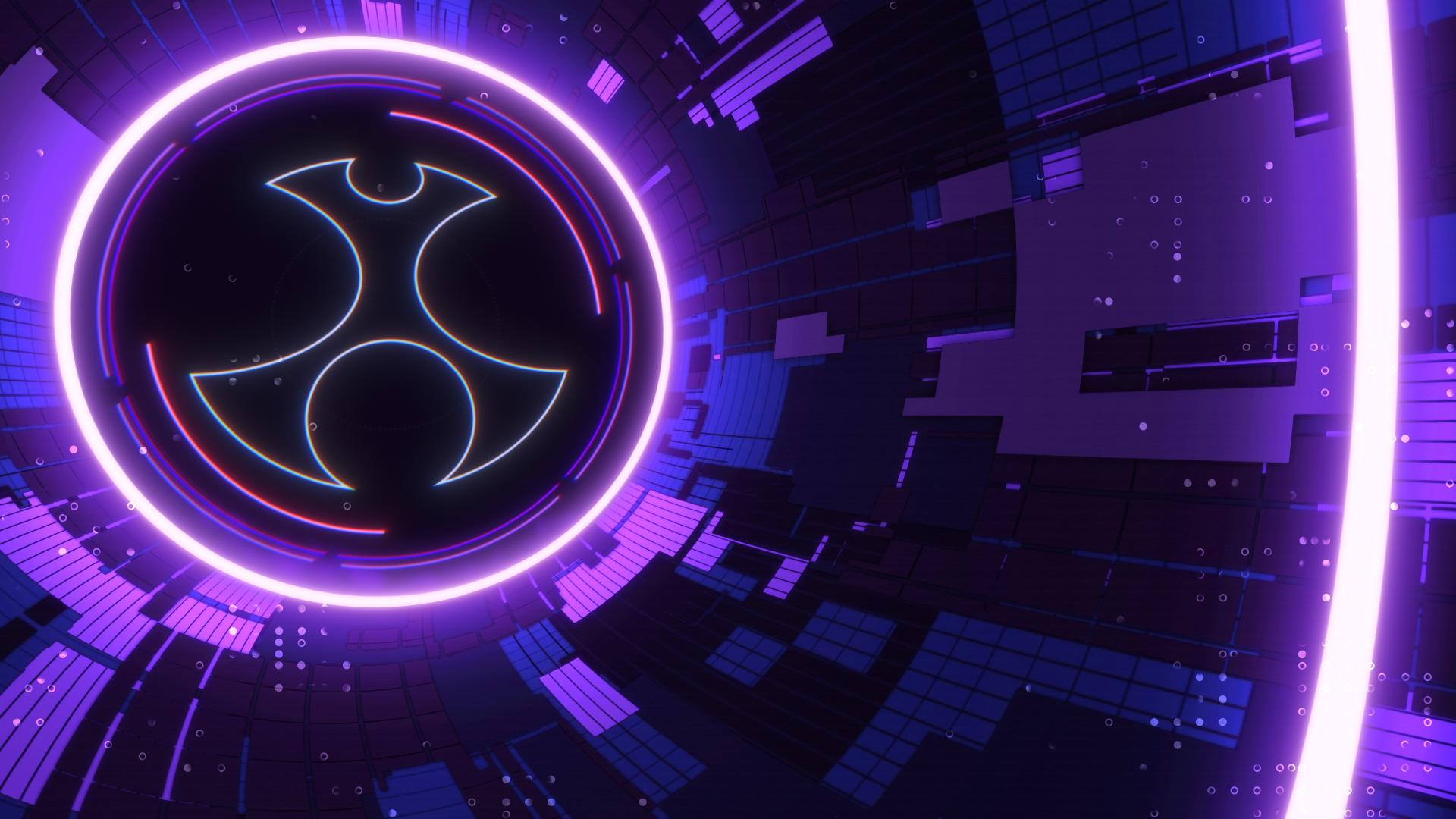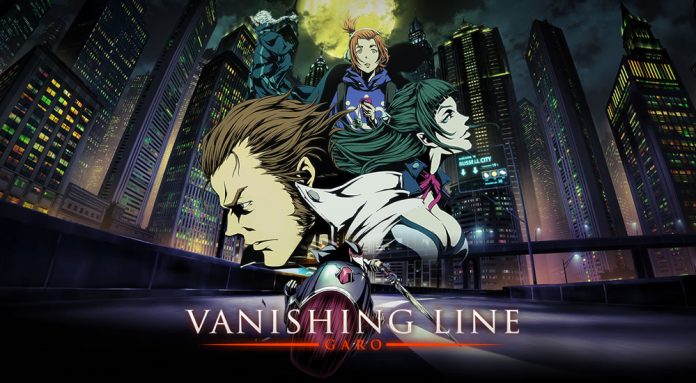(via: MAPPA)
Once again, fans get another series where humanity’s in trouble from the wrath of Horrors. Thankfully, no matter the time, Makai Knights will protect the innocent from being eaten by these mystical creatures. However, in this series, Garo gets an update as our main story takes place in modern times. Instead of the medieval aesthetic, GARO – VANISHING LINE – (Vanishing Line) is populated with vehicles, cell phones, and the internet. It’s a bit of a culture shock compared to the previous two iterations of Garo. I generally enjoy it when stories continue through time, much like JoJo’s Bizarre Adventure, as it allows for a lot of the lore to grow. And while we focus and follow new characters, much of what is essential in Garo stays the same. The overall dynamic between Makai Knights and Horrors continues even as centuries move on. And surprisingly, I rate Vanishing Line the strongest out of all the Garo anime.
Vanishing Line Part One is 12 episodes long and follows a young girl named Sophie. She’s searching for her lost brother, who seems to be at a place called El Dorado. Much like the city of gold from folk tales, this place is a paradise for some, and Sophie will do whatever she can to find her brother. However, her search leads to a man who transformed into a Horror and was eating women. Thankfully before Sophie was devoured, the Golden Makai Knight Sword shows up and rescues her. He also seems interested in learning about El Dorado, as there are many Horrors involved with it (from his investigation). Reluctantly, Sword and Sophie team up to not only stop Horrors but to find the lost brother that has been plaguing Sophie as long as she can remember.
Throughout the first seven episodes, fans are treated to a monster of the week format, where Sword or his allies (Luke and Gina) take down a Horror or an operation involving a Horror. It was an easy watch, and many should find it enjoyable. For Luke, he helped slay a former Olympic gold medalist with his sniper rifle, while Gina stopped a mafia organization using a Horror for intelligence. While the more significant plot point of finding El Dorado was present, not much else advance that part of the story. At least until Sophie’s orphanage is attacked.
It’s during that story arc where a clearer picture of El Dorado comes into focus. The Silver Knight was taken over by a Horror and will do the bidding of the king of El Dorado. Horrors seem to be operating there since a Horror was setting up a field trip for Sophie’s Orphanage before the attack. And we learn Sophie herself is asked to go to that place by the king. And with many lives hanging in the balance, it is up to Sword and the Makai Alchemists to thwart whatever is going on at this elusive paradise.
Compared to the other Garo series, Vanishing Line starts the strongest out of them all. From the beginning, fans get a great taste of what is to come with this series. The dark setting, the “Sin-City” aesthetic, and the music create a beautiful blend for viewers. I loved what Vanishing Line did in establishing an environment that is much more appealing to older audiences. This series felt like it was for adults in their 30’s more so than the typical anime audience. It’s fantastic, and I would love for more series that cater to an older demographic.
Typically, seasoned anime fans will always recommend watching three to four episodes before deciding to quit a new series. Vanishing Line seemed to have that in mind, because the first four episodes were spectacular. Fans watch fantastic fight scenes with our main cast of characters. Leading man Sword (the Golden Makai Knight) is given some great moments to shine, fighting with his sword, fists, and motorcycle. His battles became a must-watch for me, and I couldn’t get enough as the series continued. Sword does a great job keeping your interest as he works to find and slay Horrors. He can be a charmer and show empathy to victims of Horrors in a way that isn’t naive or boring. And not to be outdone, other Makai Alchemists Luke and Gina were given some wonderful opportunities to fight. Seeing Luke pull out a sniper rifle to take down a speedy Horror was mesmerizing, and whenever he’d pull out his pistols, it led to some otherworldly fight choreography. Vanishing Line did a great job allowing the central figures moments to shine and gave viewers a great blend of sword and gun battles throughout the first few episodes. It was a massive strength to the series and one that many action fans should look forward to watching.
And even the CG effects for every Horrors and the Makai Knight armor continued to be pleasant to see alongside the 2D animation. Typically anime with CG doesn’t always look as clean as fans would like. However, Garo has never had that problem, and that quality continues in Vanishing Line. It was especially noticeable when Sword had to take out the Silver Knight (Luke’s father) in a battle that devastated the entire city. Very reminiscent of the Superman vs. Batman film, yet I think DC should take some pointers from Vanishing Line in handling that kind of battle. It was phenomenal and delivered on every level imaginable. Plus, the Horrors looked more disturbing than ever before and watching our heroes slay them was fantastic.
I also thought the character designs for the central cast was the strongest of all the Garo series. Sword is a throwback to the quintessential “badass” that many comic book fans know well. Large, muscles, active libido, etc. And while not all of his antics were my cup of tea (found it terribly annoying and ridiculous toward the end of this release), it was interesting to see an older archetype used as the Golden Makai Knight. Luke, Gina, and Sophie look terrific as well. Luke has long silver hair, a jacket collar over his mouth, and dual pistols are the exact visuals I love to see in a character. Gina is the picture-perfect definition of femme fatale. She’s both beautiful and capable, and it was nice that Vanishing Line stays away from making her a simple love-interest for Sword. Gina isn’t a liability, and I’d argue more useful than both Luke and Sword. She can use her feminine wiles and beat you up in the process, making her more complete.
A big surprise was how much the music for Vanishing Line resonated with me. Sword’s central theme was amazing and hit the right emotions during large operations or battles. The guitar riff was powerful even if it was somewhat straightforward (which fits Sword’s personality). But it was the song that played during Luke’s moments that caught my attention; a solo piano right before more guitars would pop up. Overall, the musical scores in Vanishing Line are the best that Garo has ever had.
As is with all Garo series, cast members from the previous series show up in new roles. It isn’t my favorite part of Garo because I’d rather have other voices get a chance to shine. Although I was fond of hearing Monica Rial, Ricco Fajardo, and David Wald switch sides to play Horrors this time around. And I understand how this could be viewed as linage from other Garo series. It doesn’t deter much from the series, but I found it weird, considering ADR Director Caitlin Glass brought in a ton of newer anime voices for this project. It always caught me off guard.
And that isn’t to say the casting isn’t good for Vanishing Line, cause it is. As Sophie, Madeleine Morris holds up amazingly well and does a great job as one of the leading storytellers of Vanishing Line. Throughout the story, Sophie’s importance puts more emphasis on Morris’s acting, and I thought she did well to give Sophie the troubled/anxious teen tone that was needed. In her desperation to find her lost brother, or when her guardian was murdered, Morris did a tremendous job for the character. I’d also give the nod to Trina Nishimura as Gina, considering what was asked of Nishimura. Gina’s attractive and stern voice felt right in her wheelhouse and does the character justice. I thought she was able to mix and match what Gina was portraying nicely, and she should receive high praise for her performance. And T. Axelrod as Sword made the series feel complete. He was able to give Sword that rough and tumble type of voice, while also adding a bit a levity whenever he was thankful for the feast in front of him. There were no weak links in this English dub, as even one-off characters stood out, such as John Burgmeier, who did an excellent job as a very creepy and disturbing Horror.
Unfortunately, FUNimation added few extras to this release. Only textless openings, closings, and trailers were added. It saddens me since I thought that Garo’s third iteration would signify that the overall property is widespread, thus warranting more extras, but that wasn’t the case.
GARO – VANISHING LINE – had the most substantial first part (12 episodes) than any other Garo series. And considering how much I enjoyed the first series, that’s high praise. It does so many things right with its action, storytelling, drama, music, and more. It’s something that fits with the demographic I’m a part of, and I could easily see this series on Toonami if more people request it (wish that happened before). I’m hopeful that the second part of Vanishing Line holds up to the first because I’m very intrigued to see what lies ahead in El Dorado. If you’re a Garo fan, you’ll quickly love this series, and if you aren’t familiar or on the fence, I’d still recommend the first part of Vanishing Line. It’s powerful and captures what makes Garo unique.
Rating: 9.5/10
Pros: The strongest start to a Garo series to date; fantastic fight scenes; wonderful OST; a central cast that offers more than simple support for Sword; wonderful aesthetics; a compelling story that brings the main characters together nicely; a wonderful English cast.
Cons: Sword’s antics can be bothersome; few extras in the physical release.
C.J Maffris is the Editor-in-Chief at toonamifaithful.com. Feel free to follow C.J on Twitter @SeaJayMaffris
Don’t forget to listen to the Toonami Faithful Podcast!


